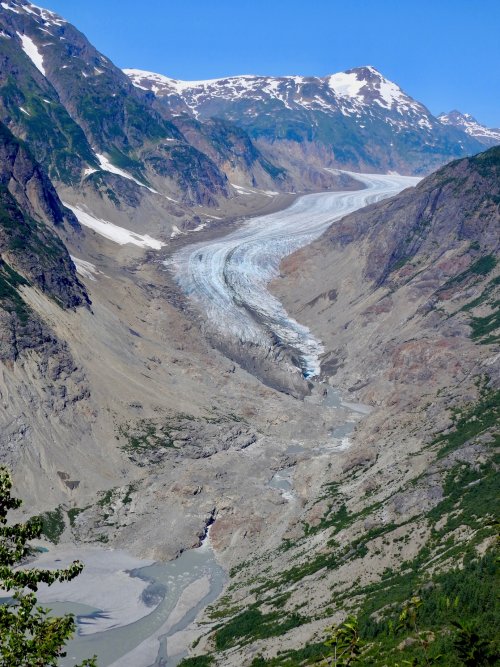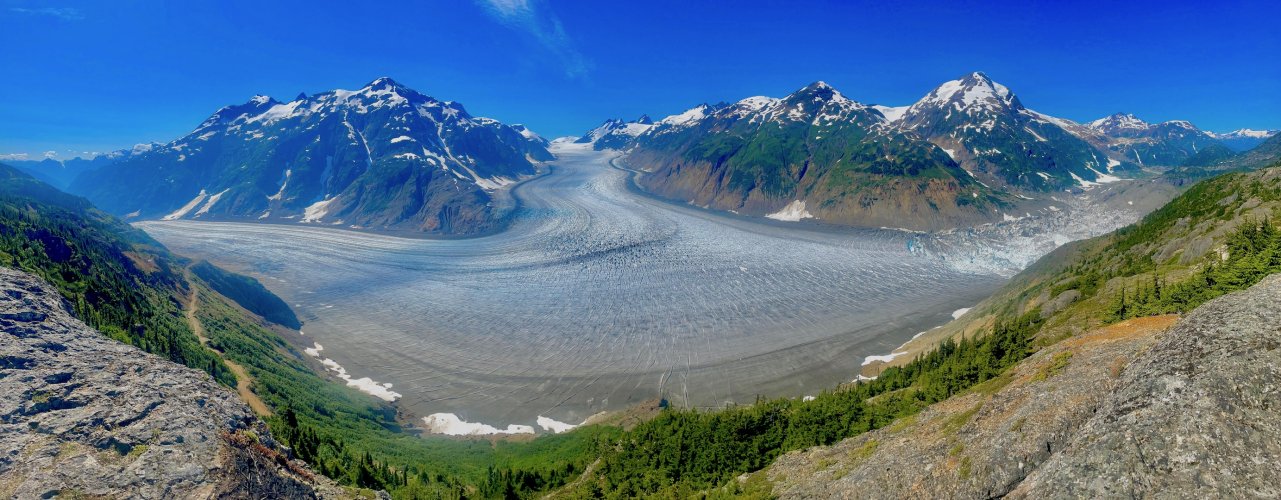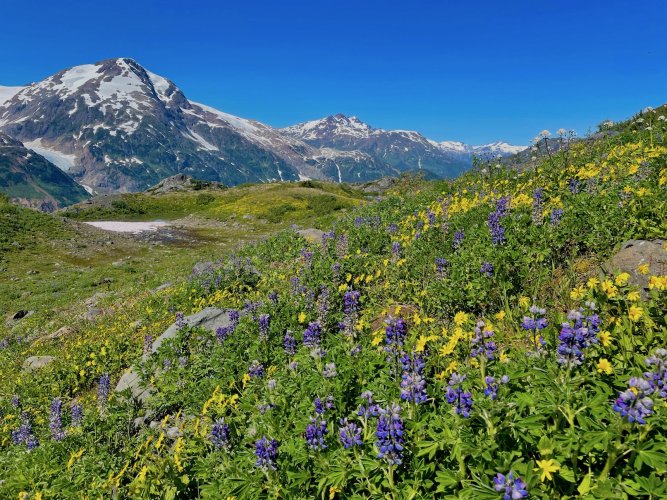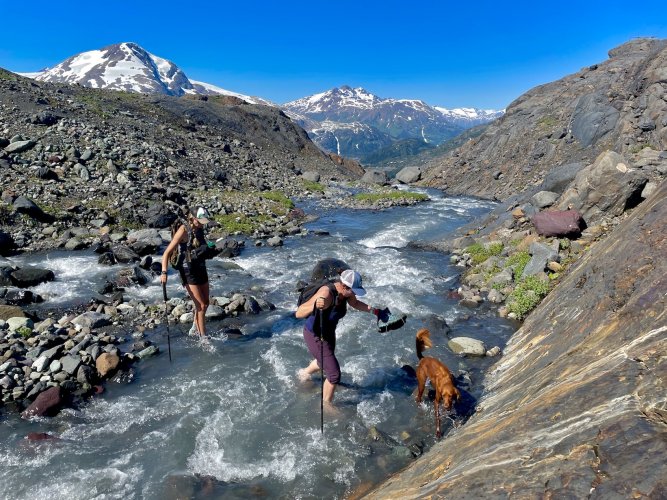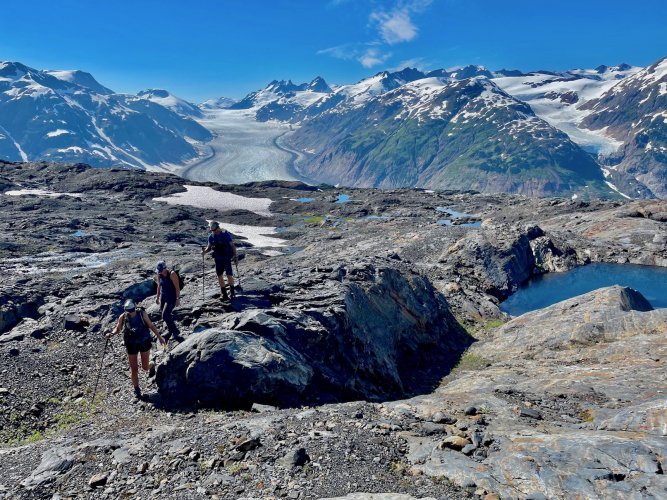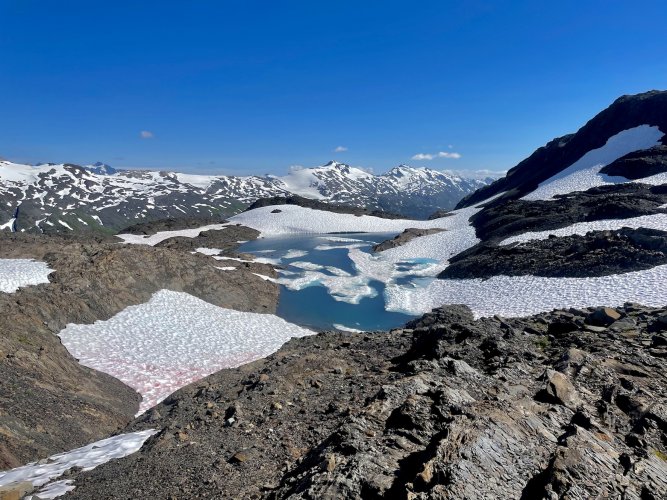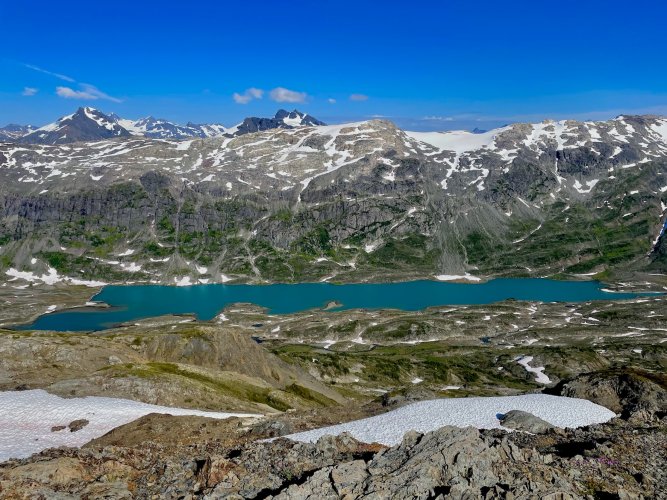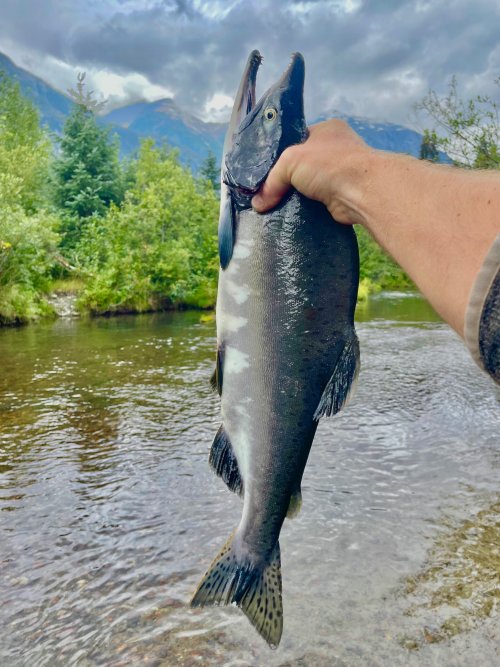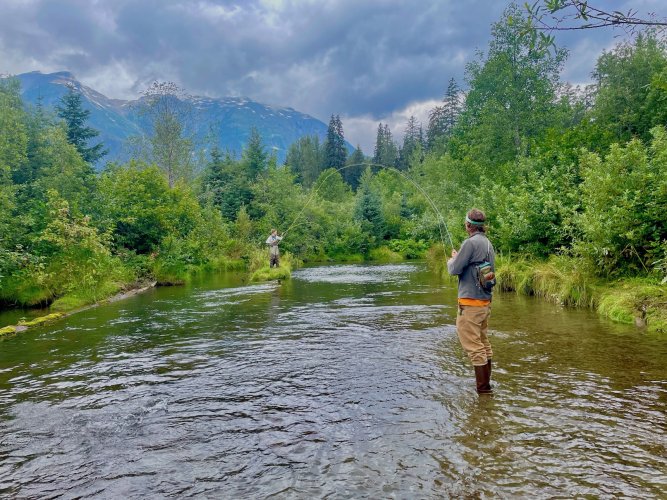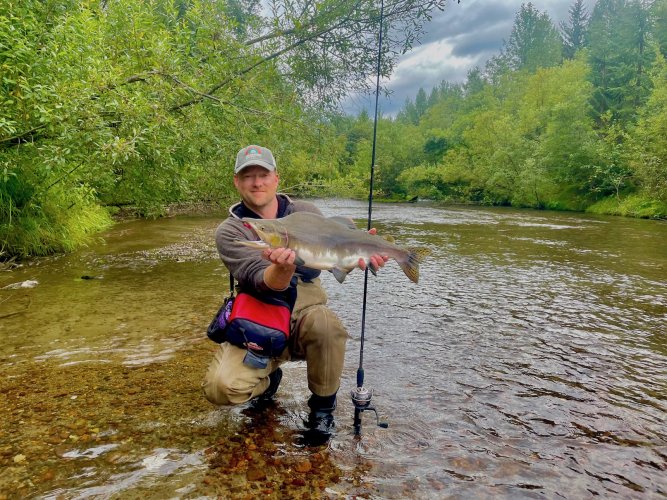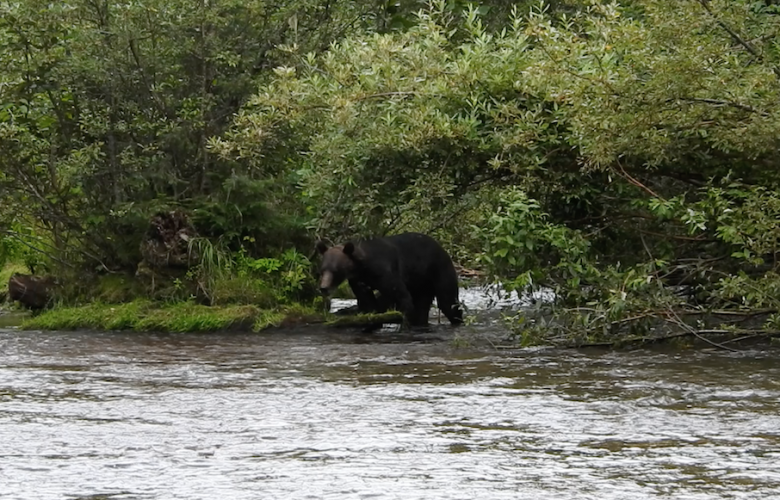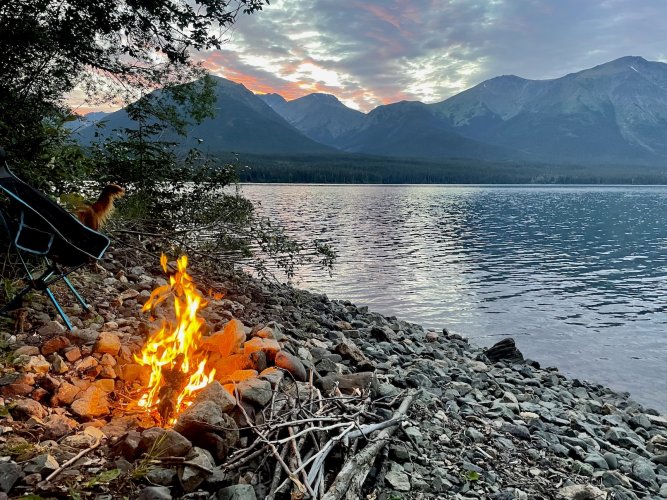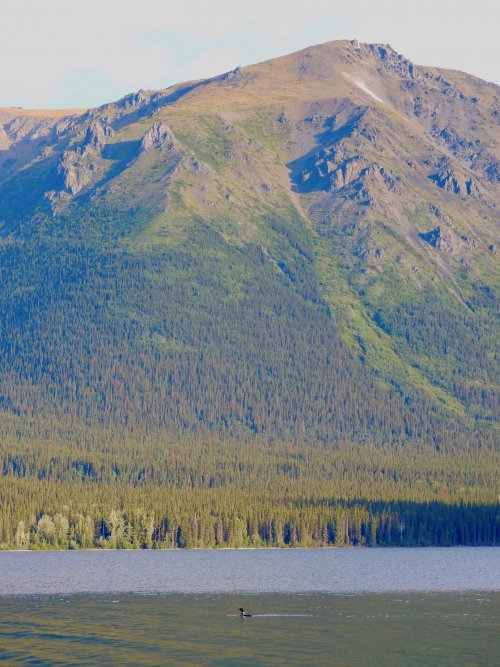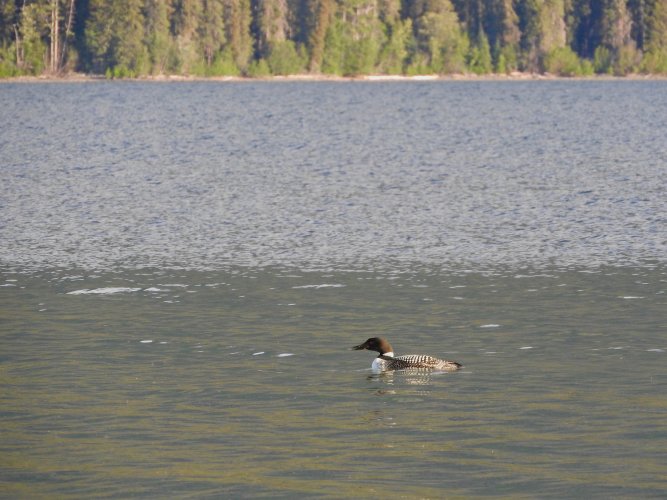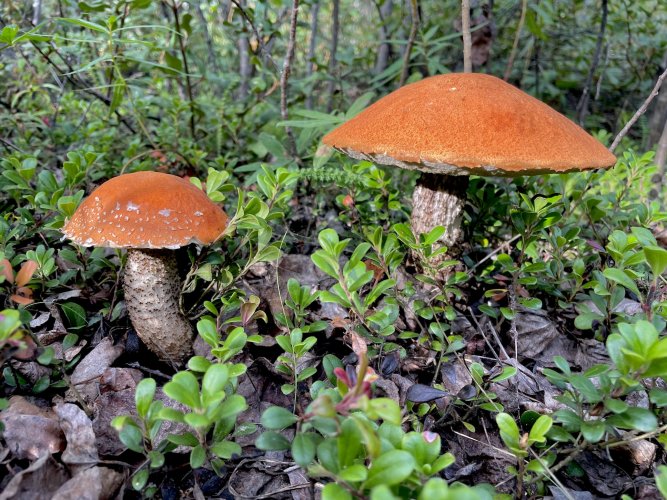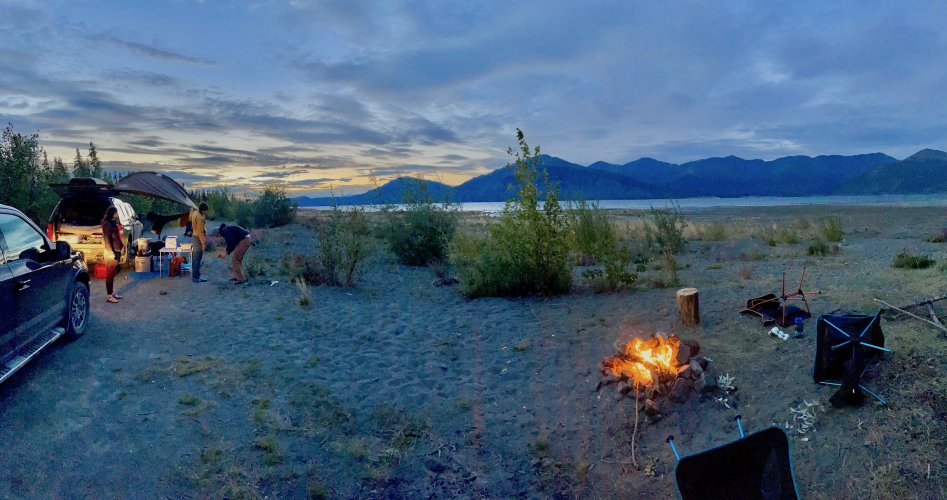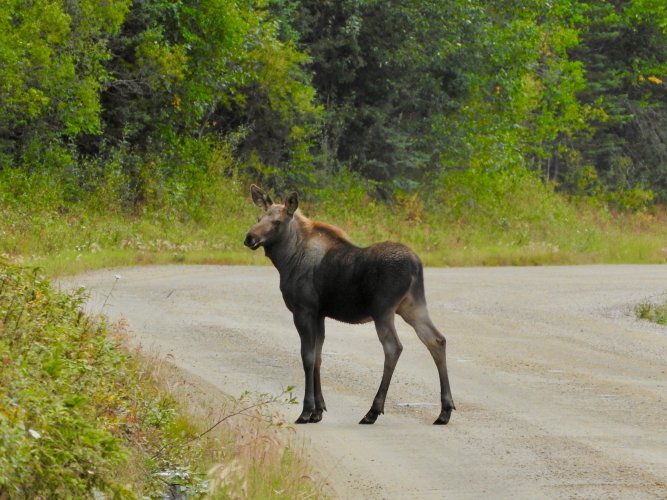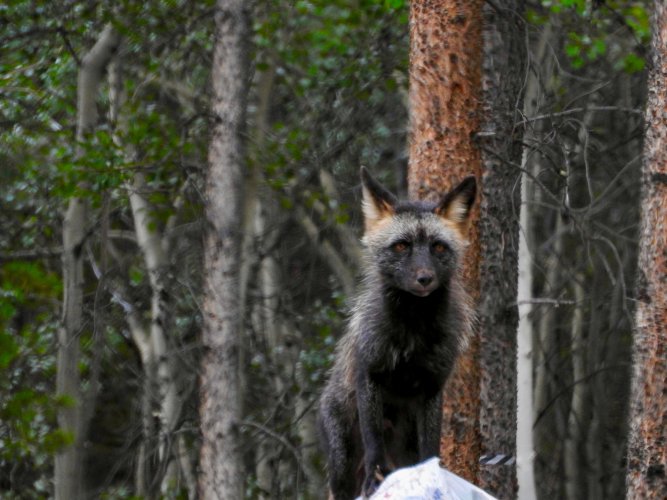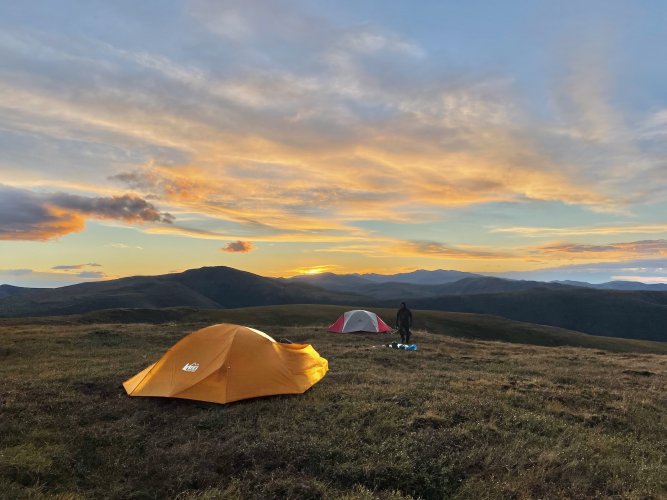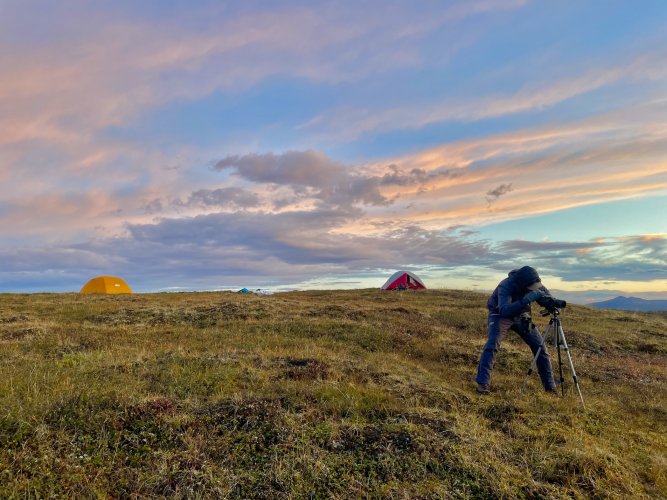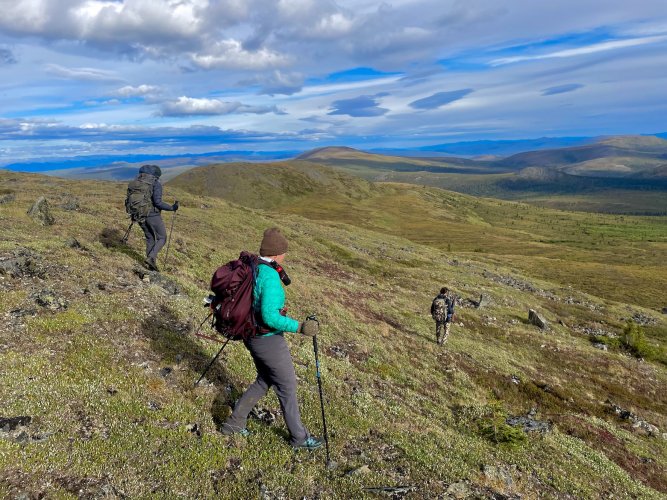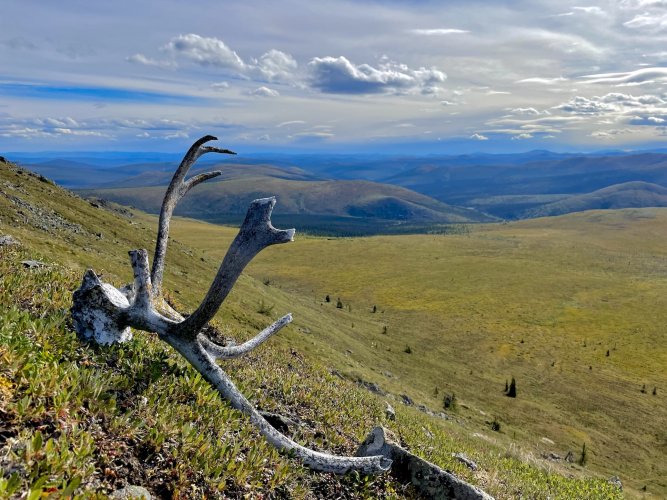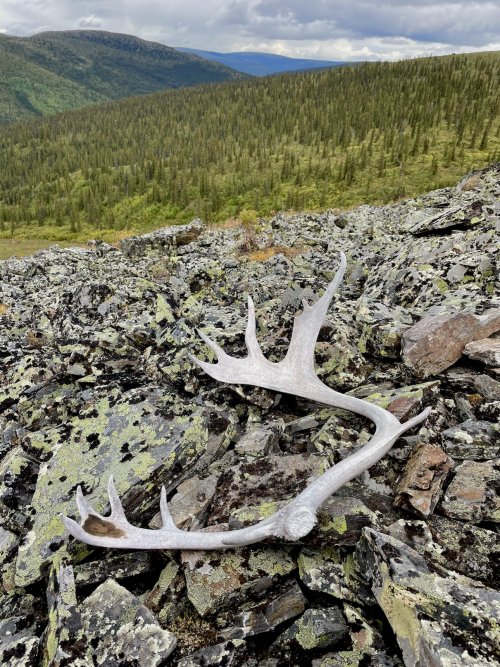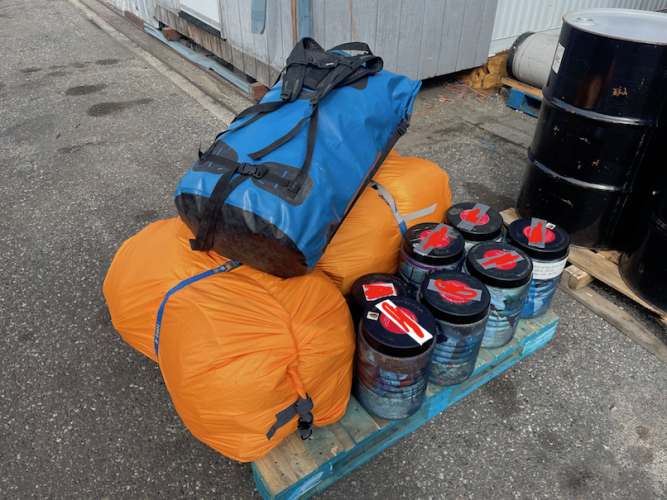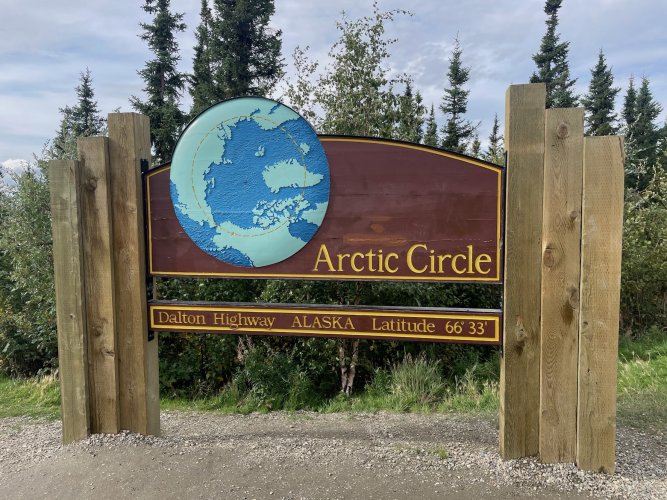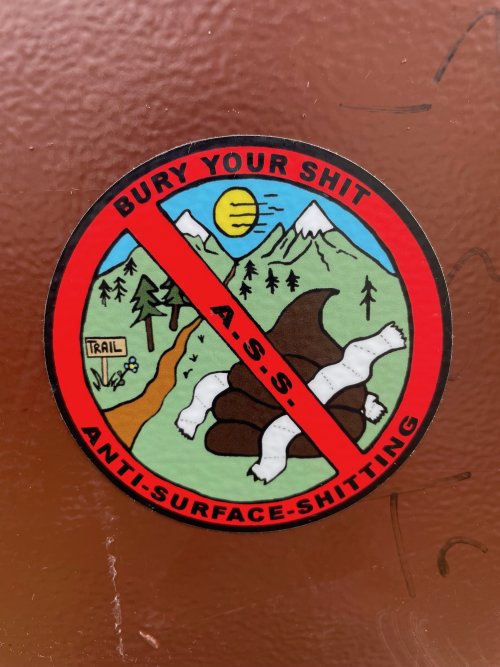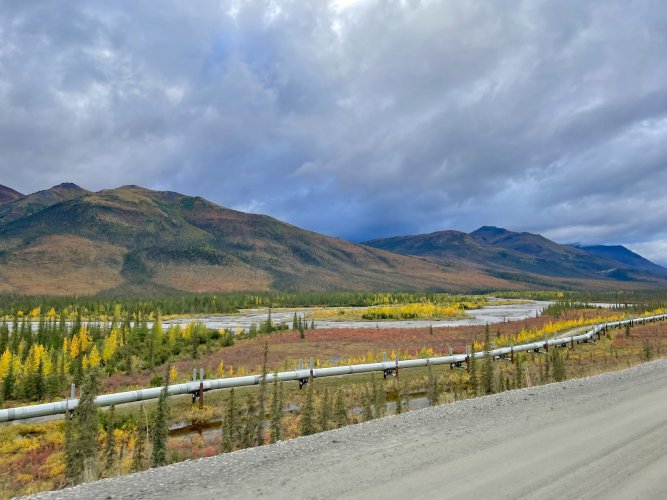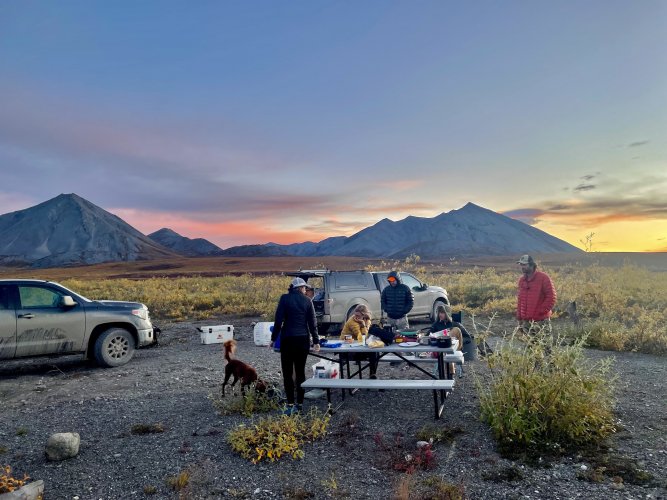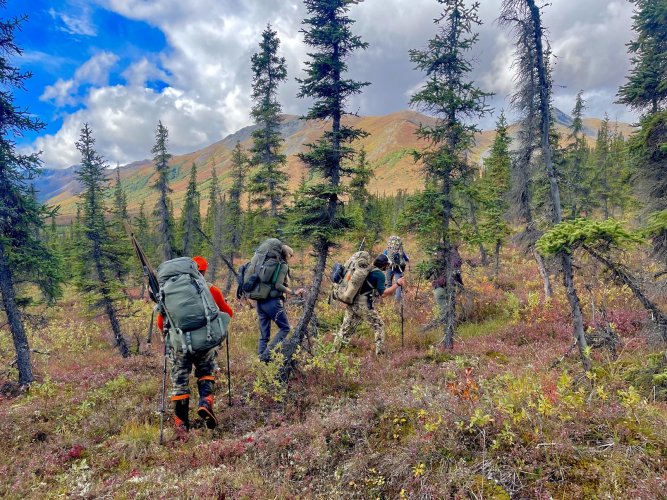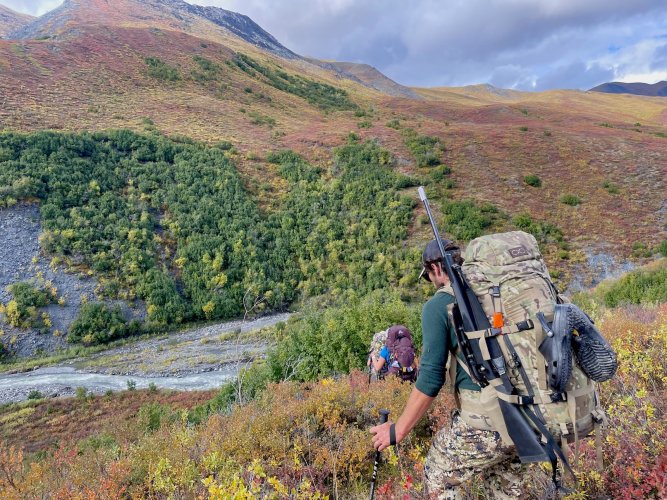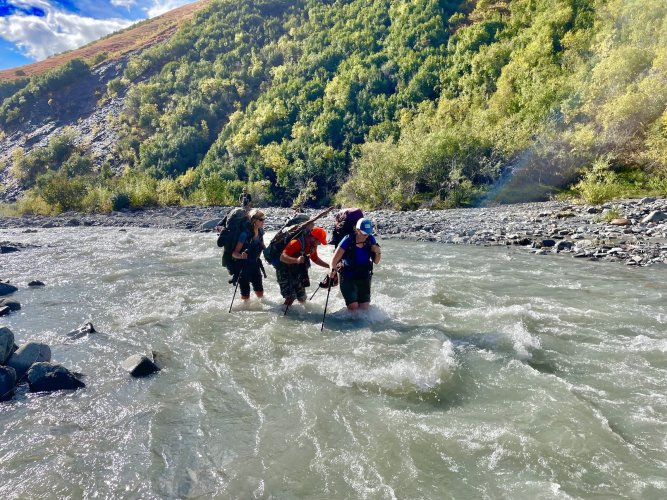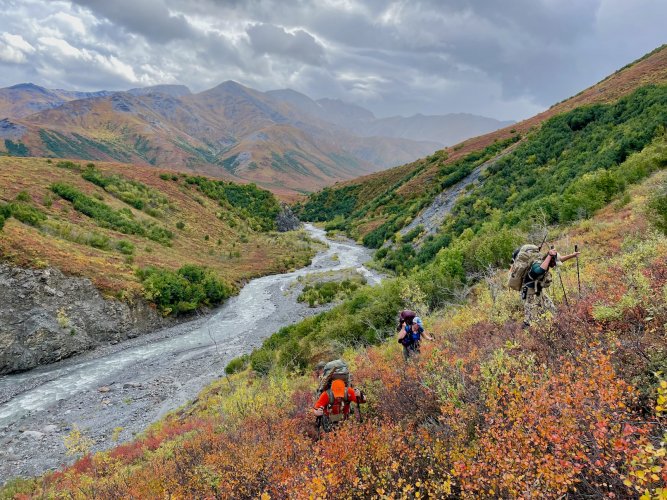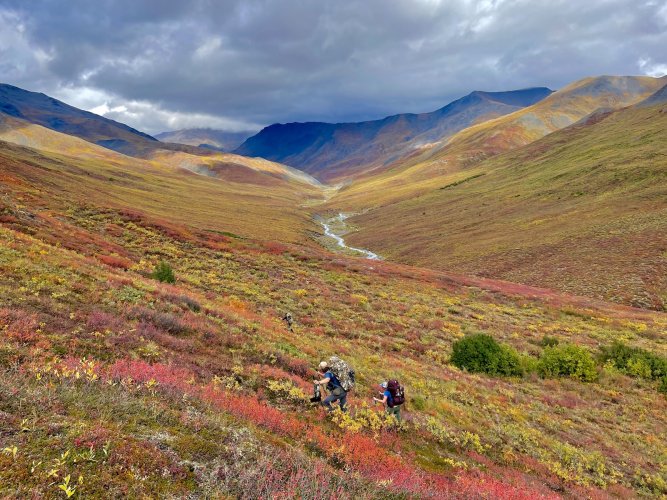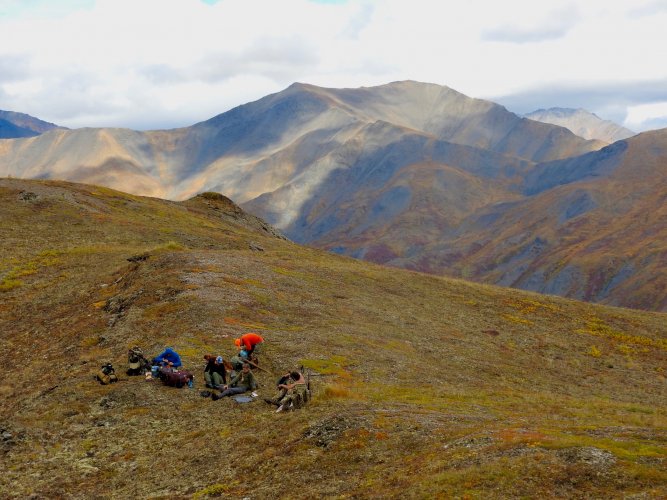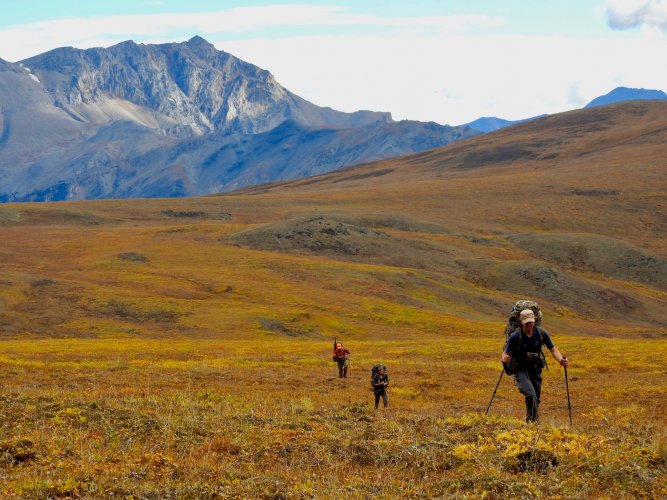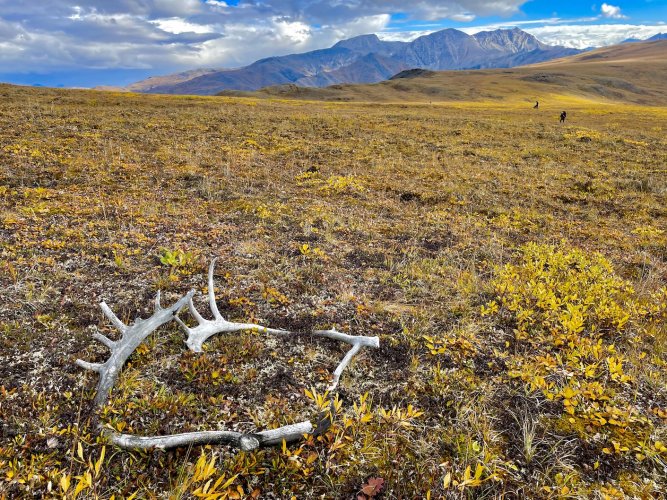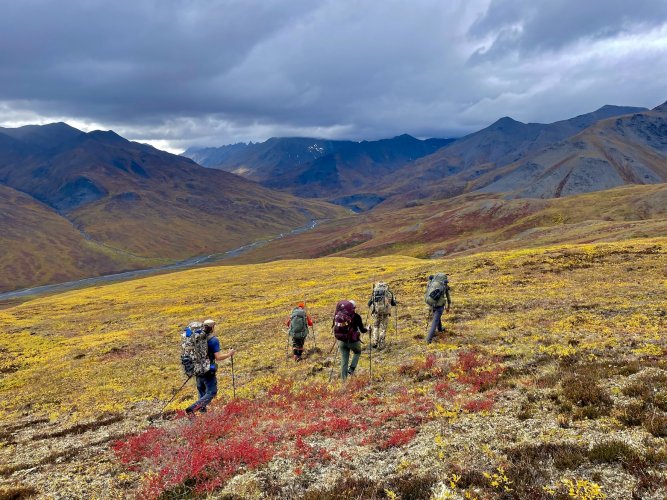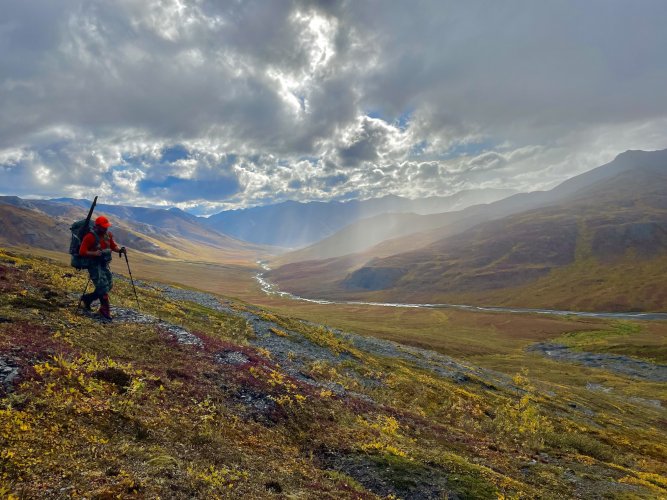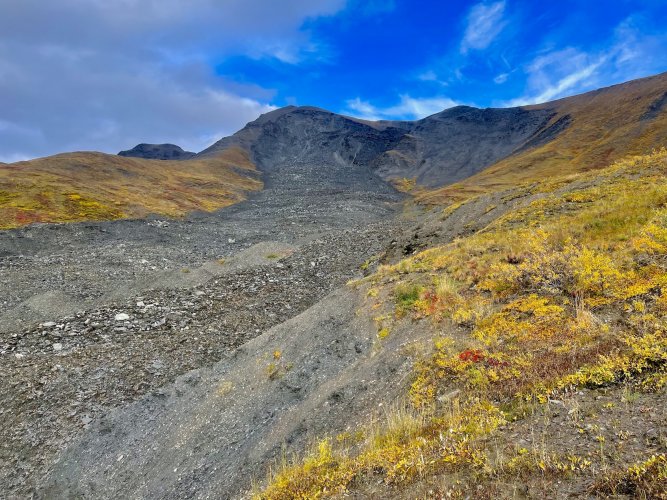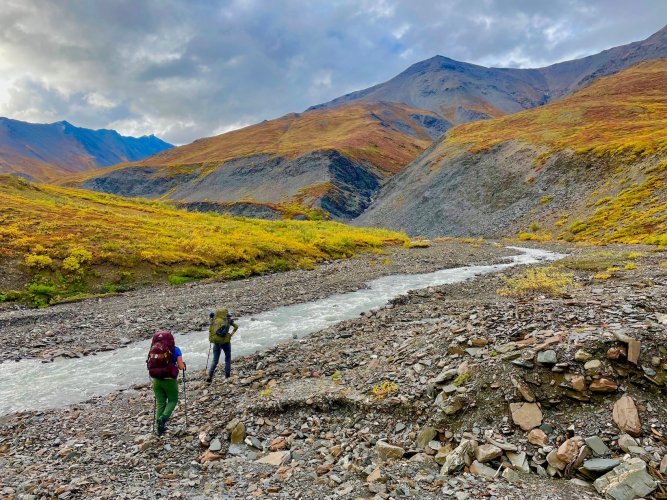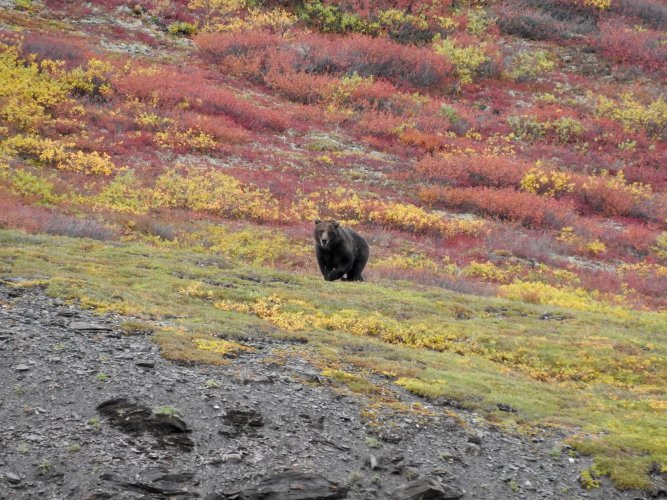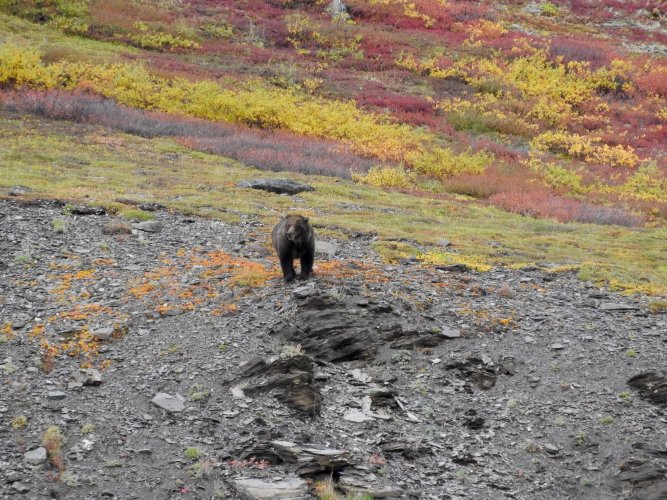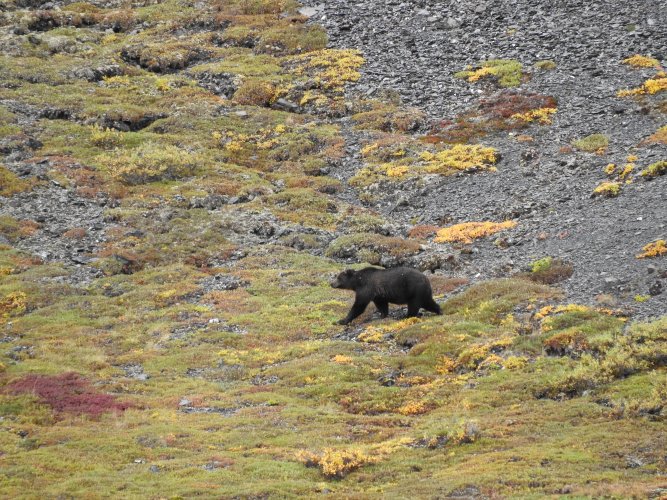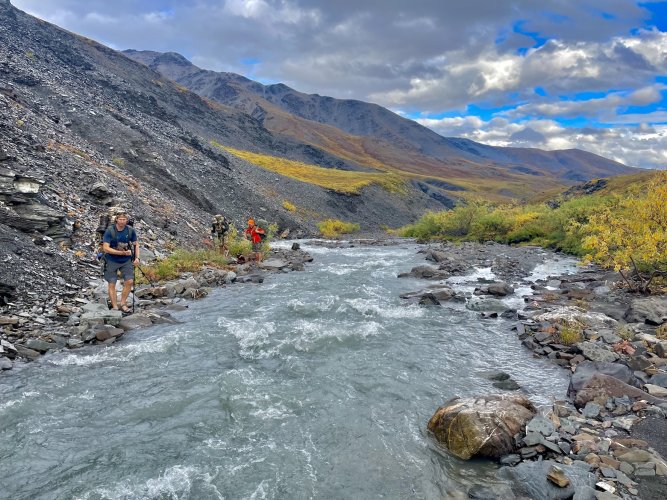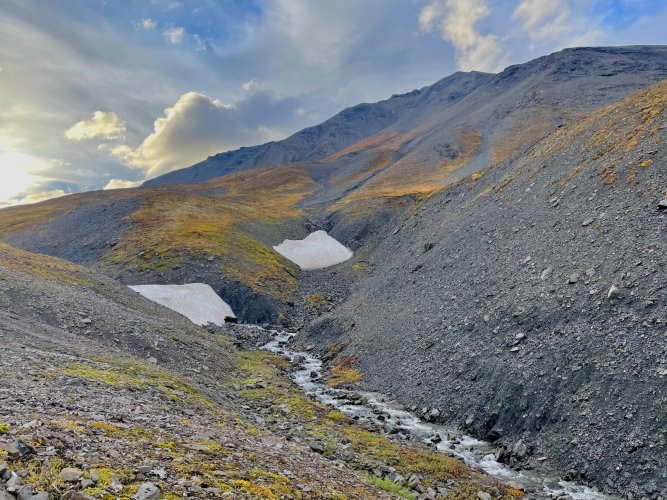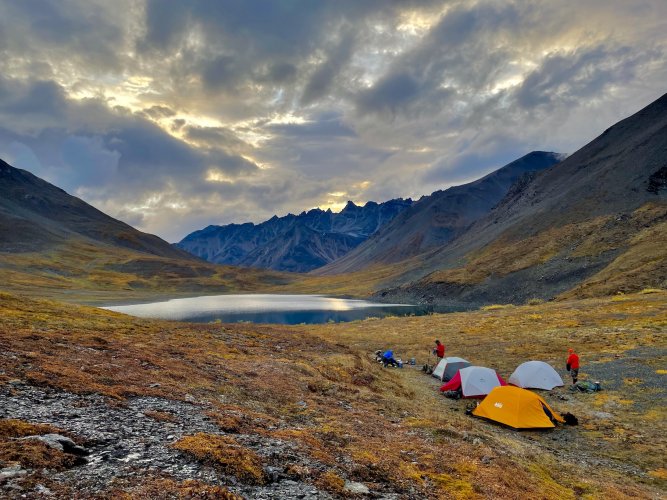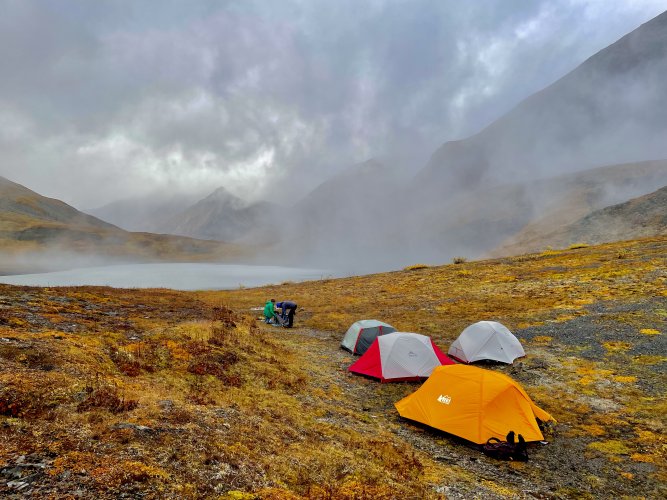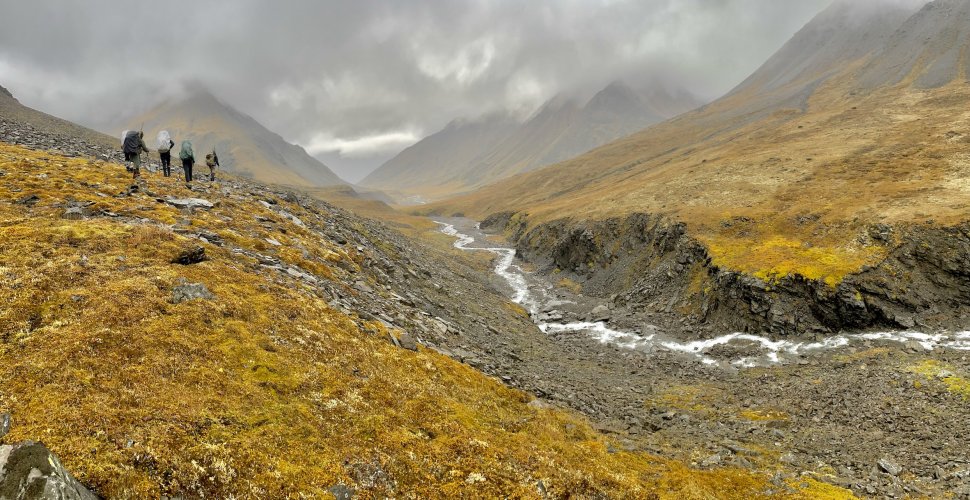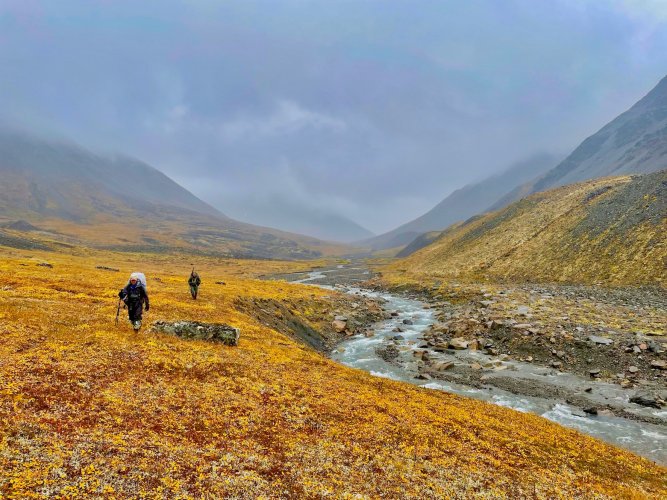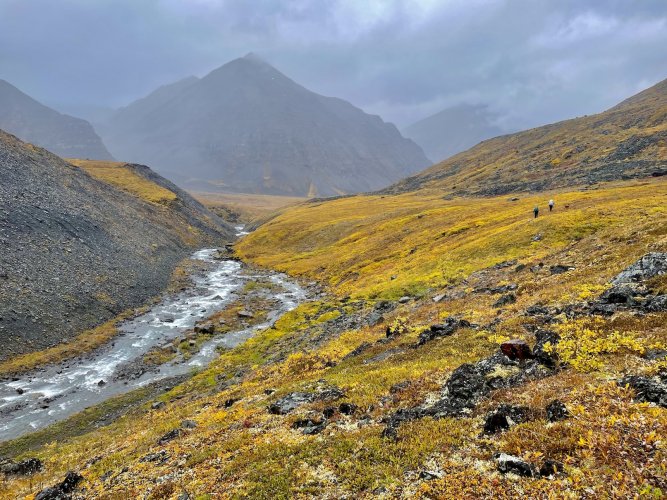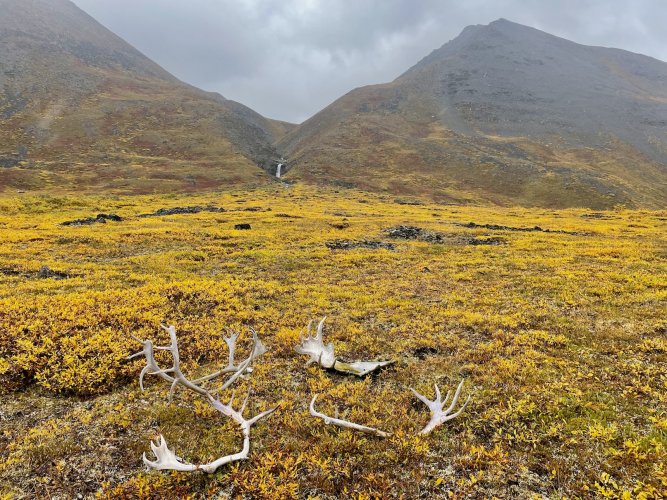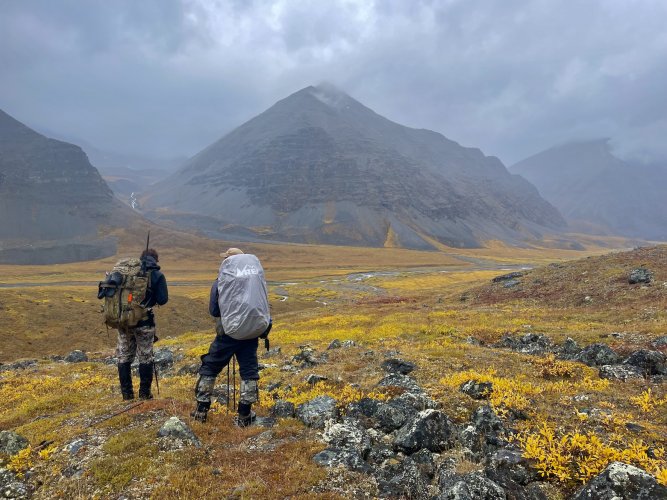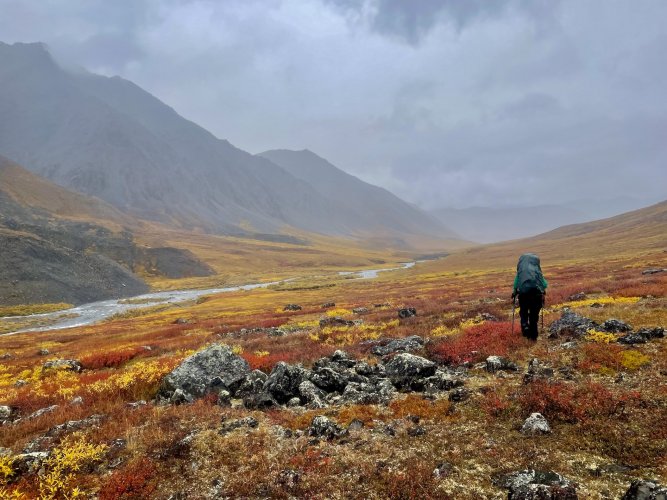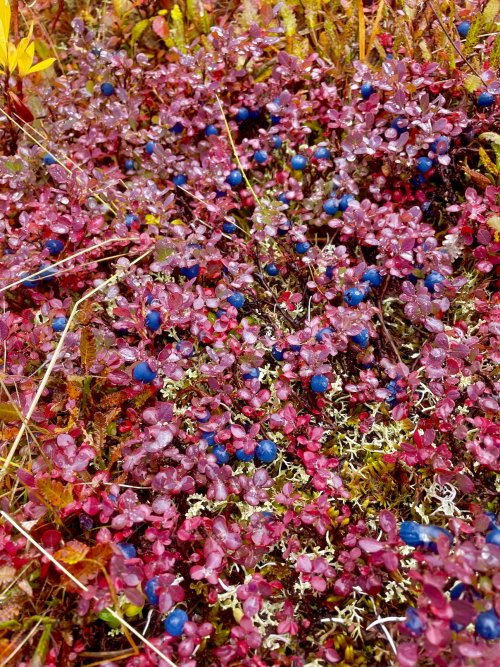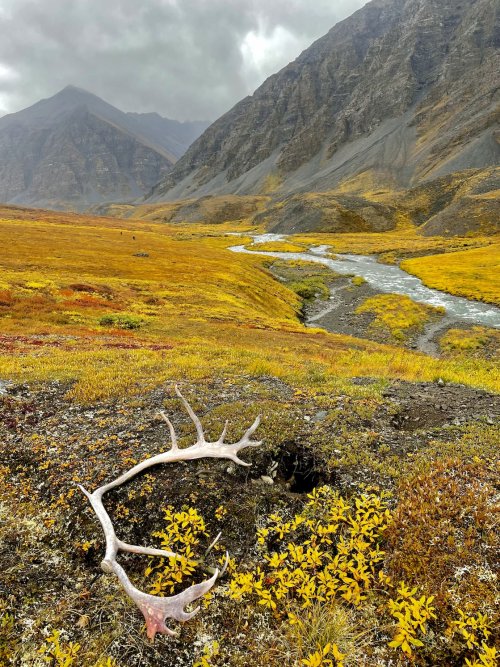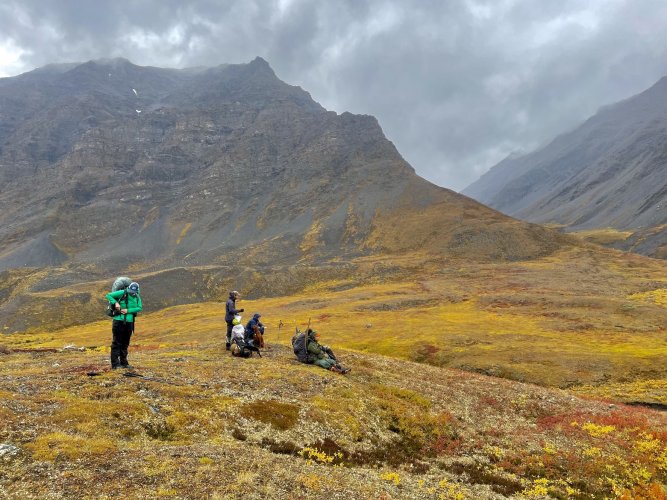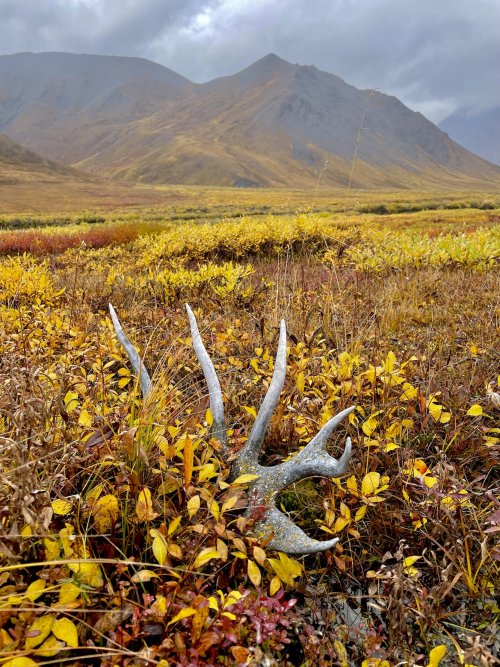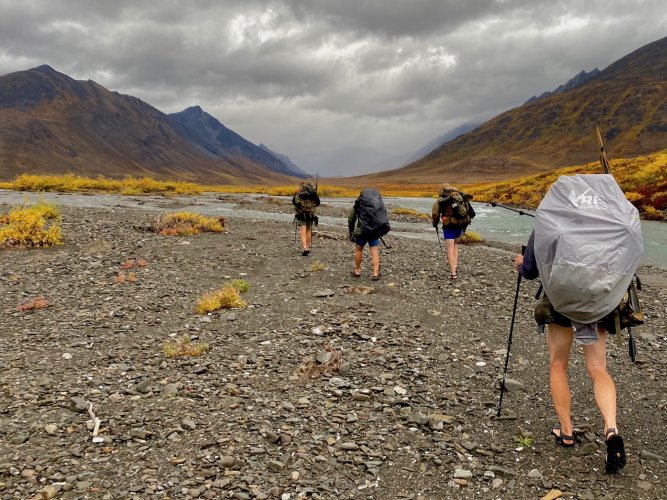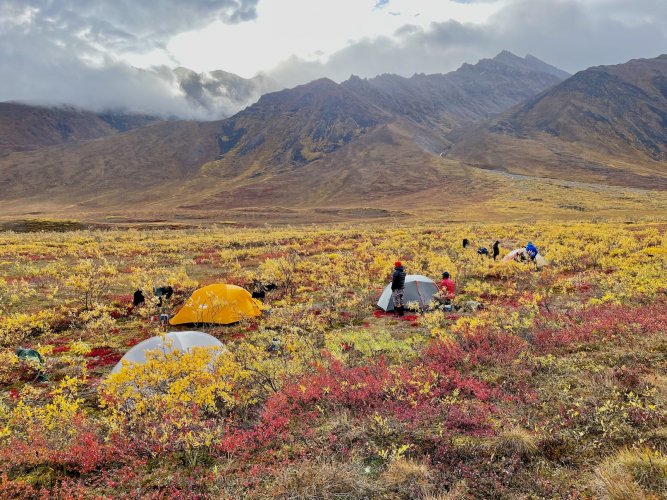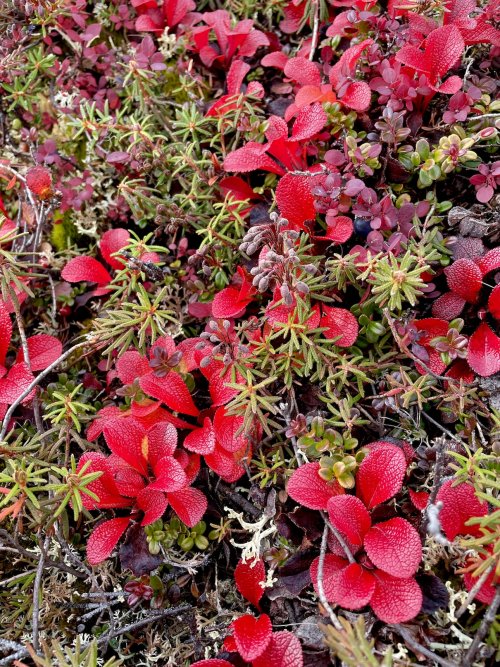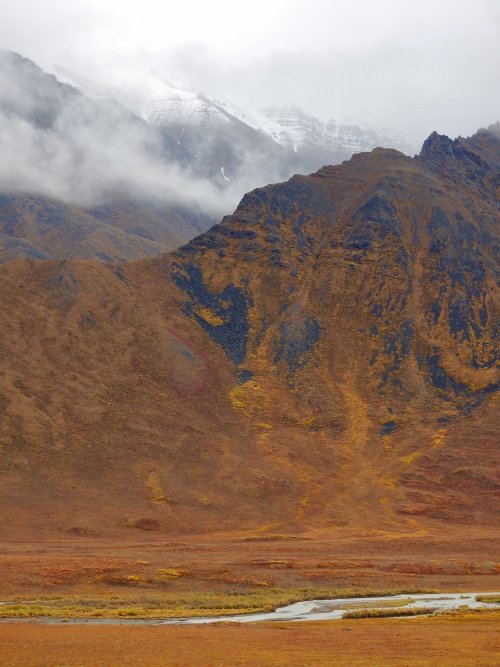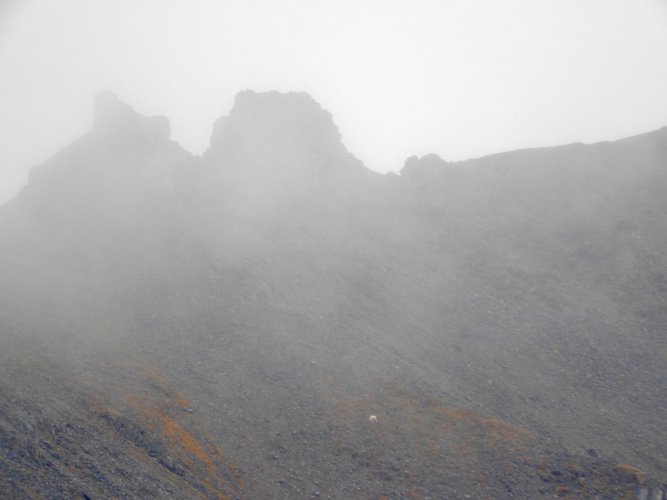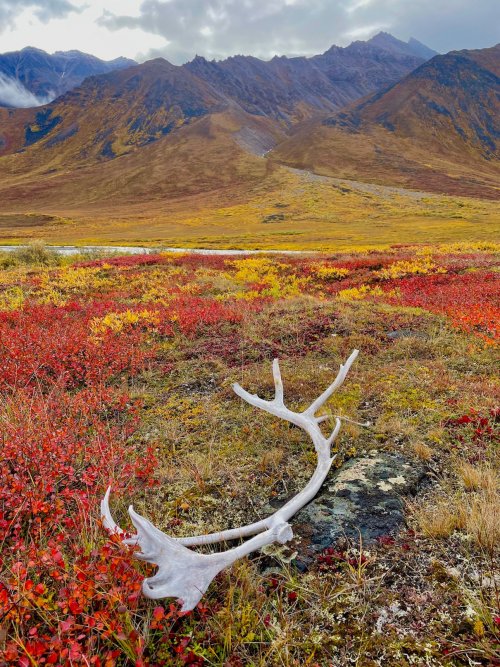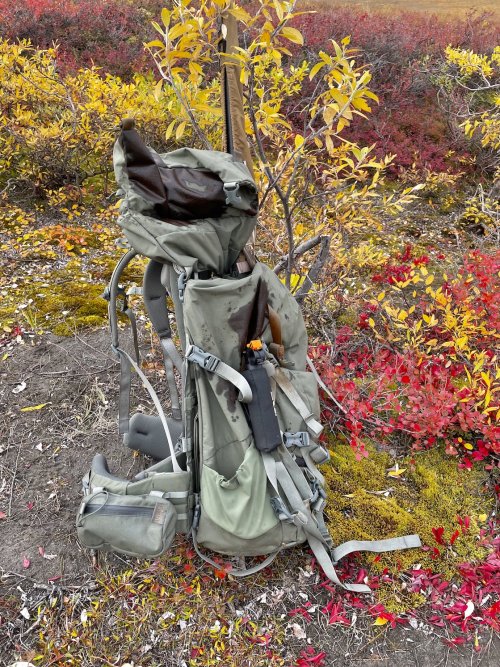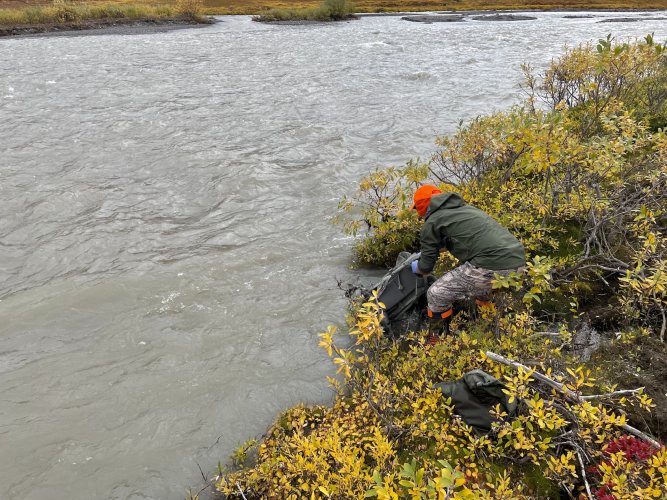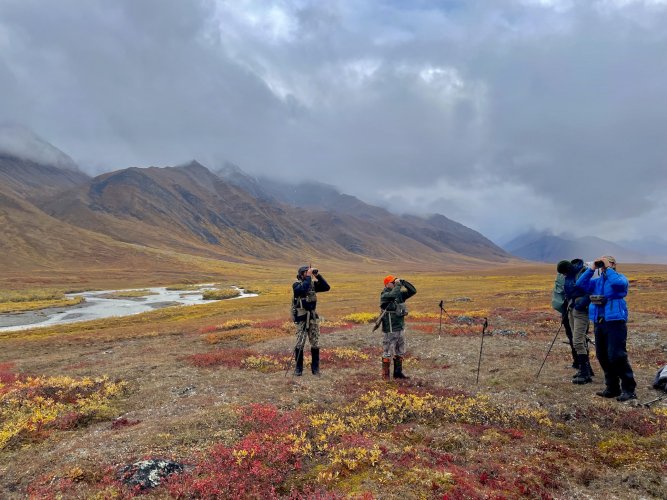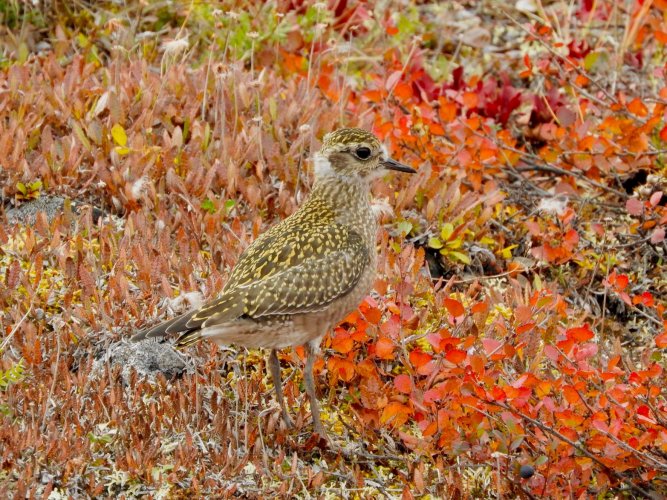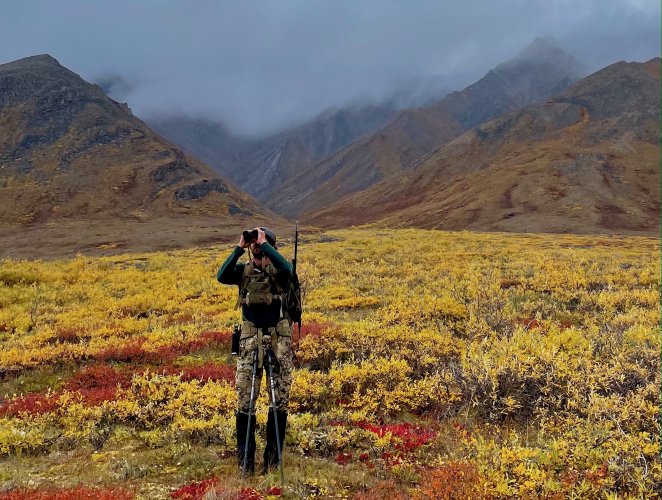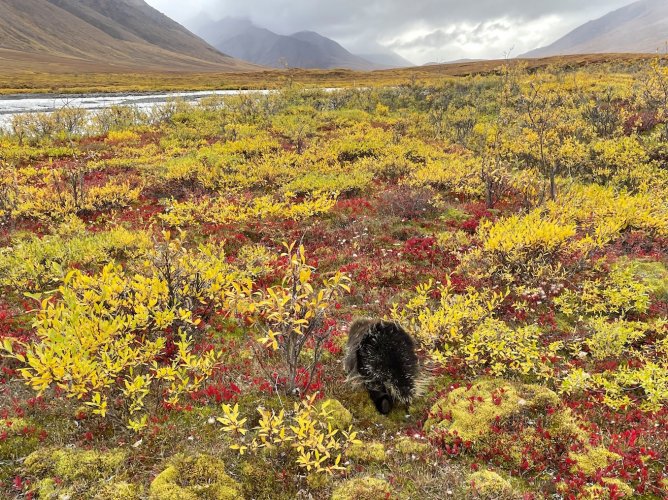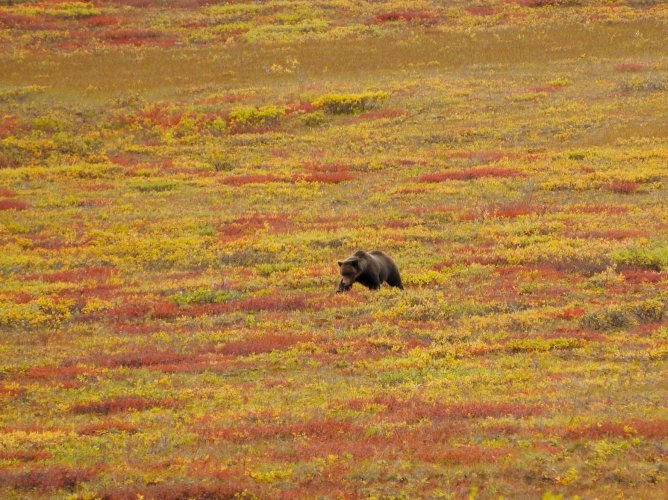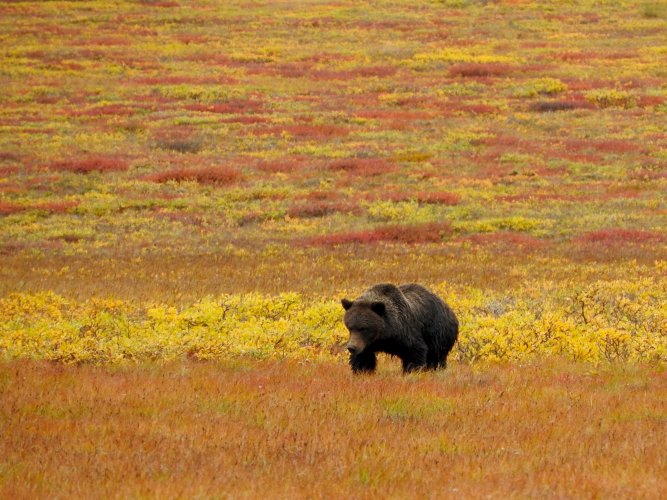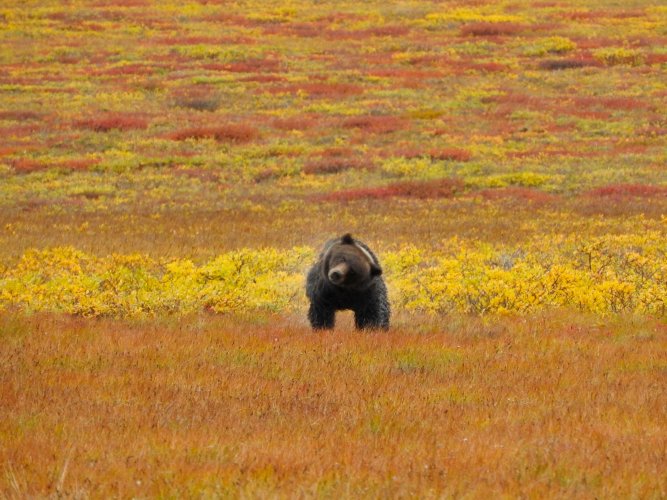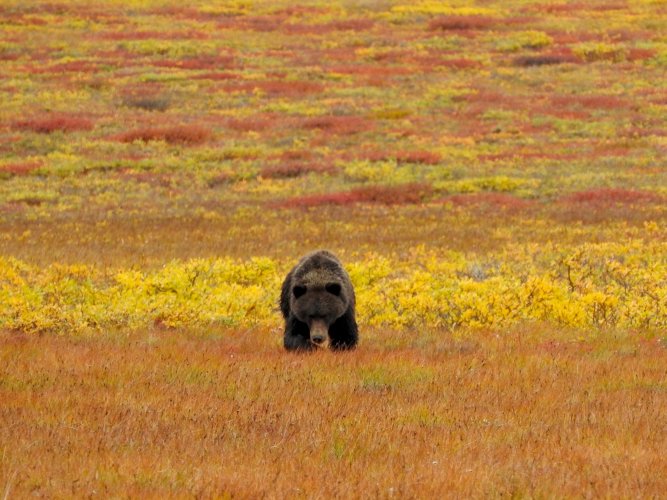theat
Well-known member
I just got home a few days ago from a 6 week trip up to Alaska. After first experiencing the state while working there during the summer of 2015 (https://www.hunttalk.com/threads/alaska-pictures.265113/), I decided that I would take every opportunity presented to return. The same group of friends that I traveled with last year for our pack rafting and fishing trip from this post, (https://www.hunttalk.com/threads/salmon-bears-super-cub-packrafts-glaciers-and-whitewater.308799/) decided to head back up this year with some ambitious goals.
On our way north we made a stop for a couple days in a part of Alaska that is about as far south and east as you can get in that massive state. I had been to this area a few times before for both work and fun. For our first night camping in AK, I decided upon a nice spot about 3/4 of a mile up a small river from the ocean. I had camped and fished at this spot many times in the past and made the foolish inlander assumption that this time would be no different. Now, even though we could see the ocean in the distance, we were set up on a gravel bench about 8-9 feet above the river level and about 18' above ocean level. Everything was great and after dinner and laying out watching the Perseid Meteor Shower, we crawled into the back of our trucks. I warned everyone that we were in an area with lots of both black and grizzly bears and to be listening for anything messing with our coolers etc. A couple hours later, I was woken by the sound of a cooler tipping over and banging into a table. I open the small sliding window on my topper and yelled at the presumed bear to get the hell out of there. In the moonlight I could see one of my coolers tipped over and moving around a bit right next to the truck. It took me longer than it should have to realize we didn't have bear problem, we had a high tide problem! Everyone quickly jumped out of bed and began scrambling to get our gear and trucks up on high ground. After stomping around barefoot for a bit, I found my chacos floating away with some empty gas cans. Due to a low spot on the access road we couldn't really flee the area and thankfully found a bit of high ground that became an island for a few hours. We checked the tide chart the next day and discovered that we picked the highest tide day of the year to camp a bit too close to the ocean. It was an almost 20' tide. Amazing for a mountain dweller like myself to see how fast it comes up and quickly drops back down. If you read my post from last years trip, you might notice a trend when it comes to high tides and us.
Sunset at our first AK campsite
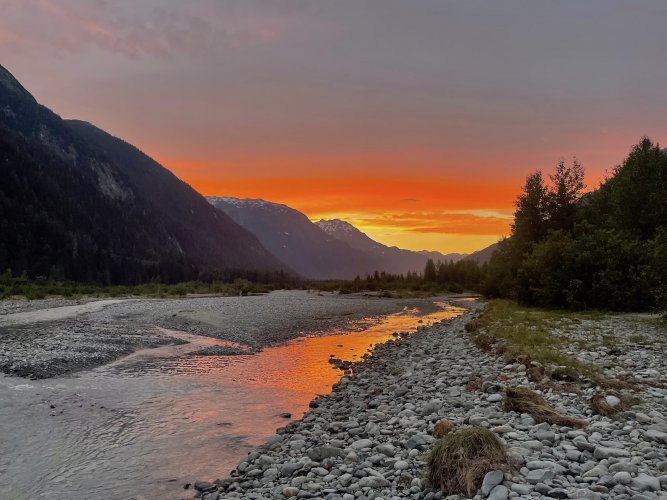
Retrieving my missing chaco and the last gas can.
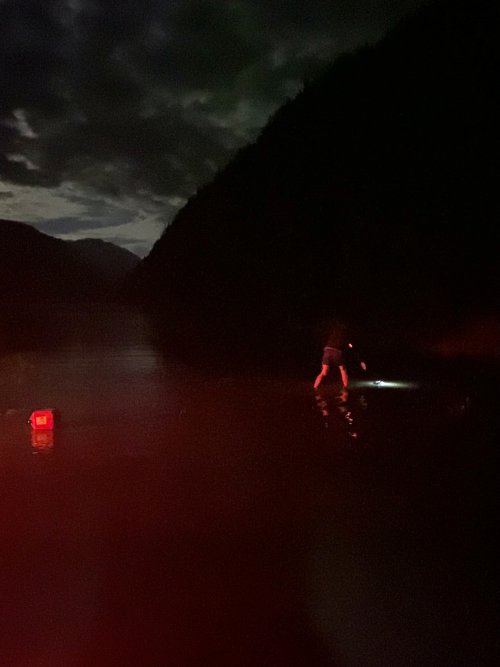
Our first "high ground" spot quickly becoming submerged
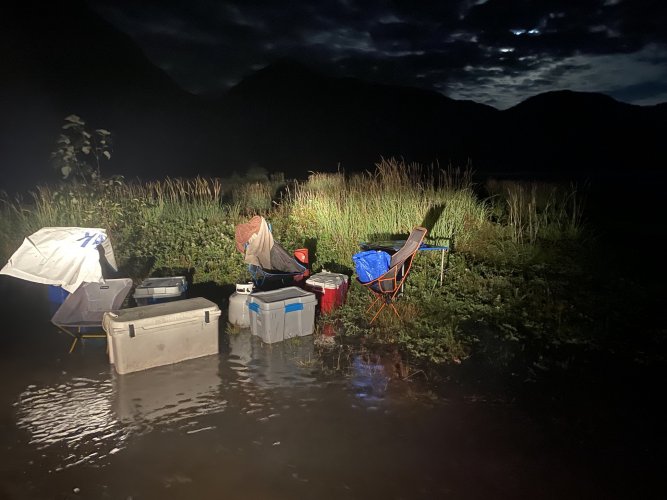
On our way north we made a stop for a couple days in a part of Alaska that is about as far south and east as you can get in that massive state. I had been to this area a few times before for both work and fun. For our first night camping in AK, I decided upon a nice spot about 3/4 of a mile up a small river from the ocean. I had camped and fished at this spot many times in the past and made the foolish inlander assumption that this time would be no different. Now, even though we could see the ocean in the distance, we were set up on a gravel bench about 8-9 feet above the river level and about 18' above ocean level. Everything was great and after dinner and laying out watching the Perseid Meteor Shower, we crawled into the back of our trucks. I warned everyone that we were in an area with lots of both black and grizzly bears and to be listening for anything messing with our coolers etc. A couple hours later, I was woken by the sound of a cooler tipping over and banging into a table. I open the small sliding window on my topper and yelled at the presumed bear to get the hell out of there. In the moonlight I could see one of my coolers tipped over and moving around a bit right next to the truck. It took me longer than it should have to realize we didn't have bear problem, we had a high tide problem! Everyone quickly jumped out of bed and began scrambling to get our gear and trucks up on high ground. After stomping around barefoot for a bit, I found my chacos floating away with some empty gas cans. Due to a low spot on the access road we couldn't really flee the area and thankfully found a bit of high ground that became an island for a few hours. We checked the tide chart the next day and discovered that we picked the highest tide day of the year to camp a bit too close to the ocean. It was an almost 20' tide. Amazing for a mountain dweller like myself to see how fast it comes up and quickly drops back down. If you read my post from last years trip, you might notice a trend when it comes to high tides and us.
Sunset at our first AK campsite

Retrieving my missing chaco and the last gas can.

Our first "high ground" spot quickly becoming submerged




